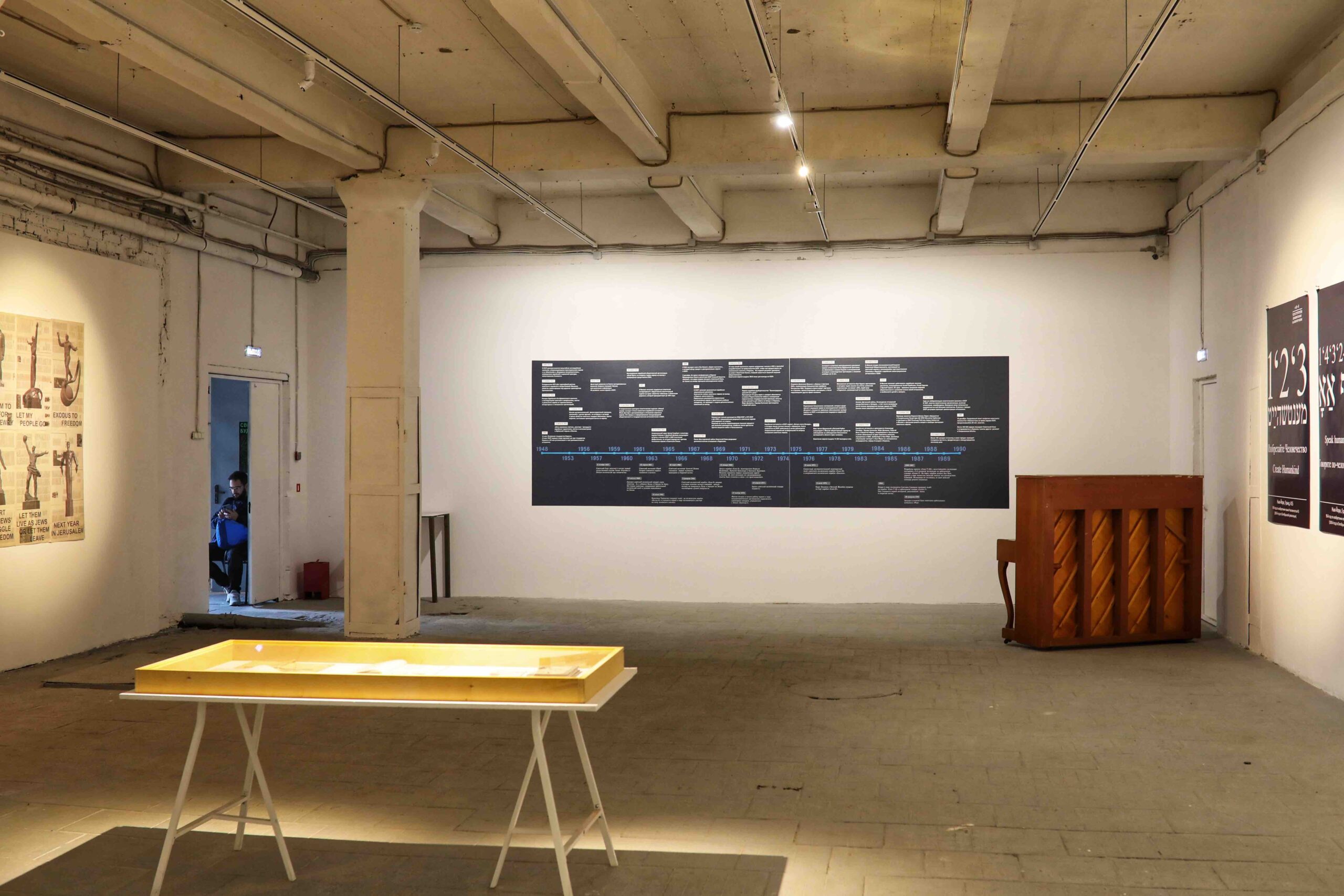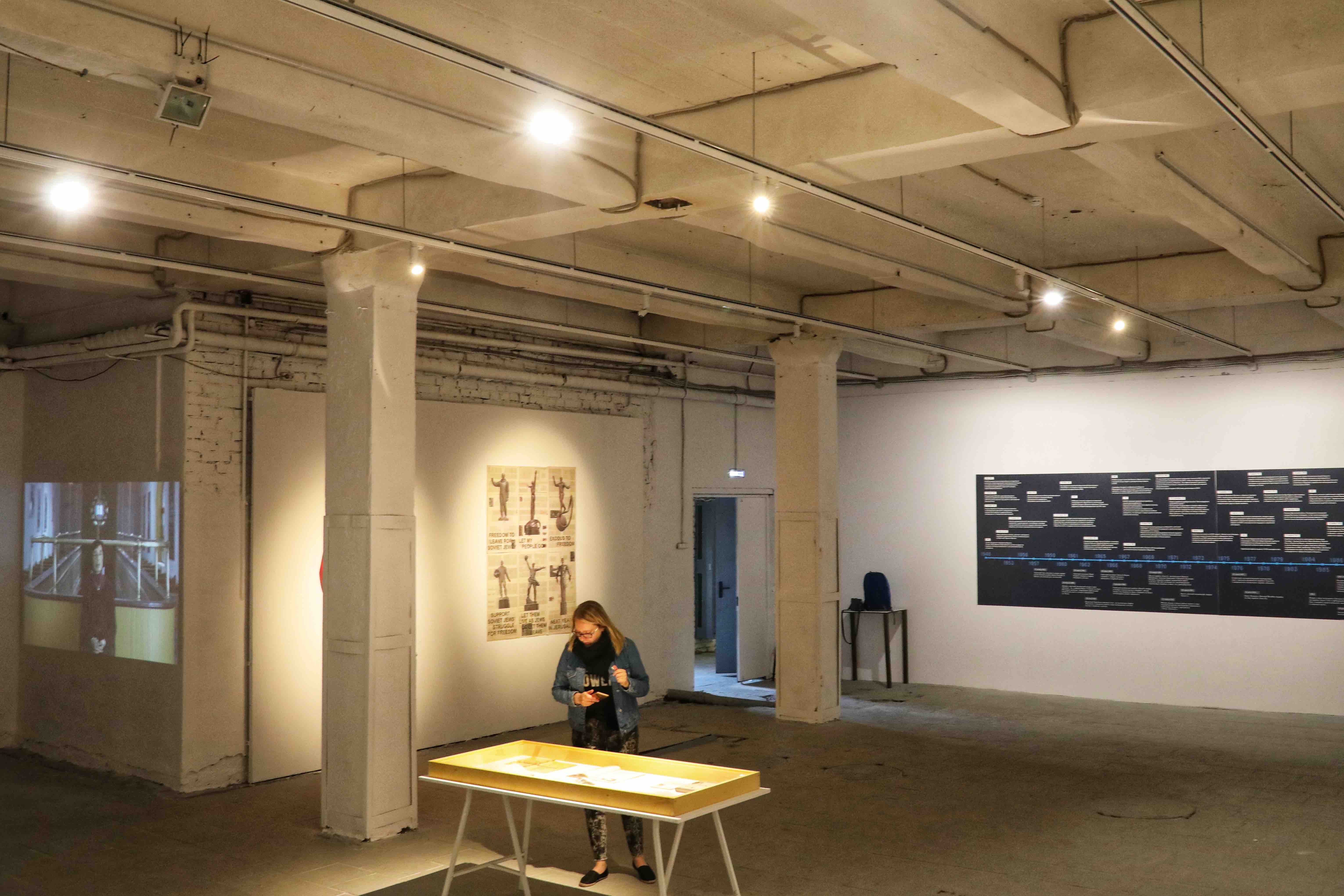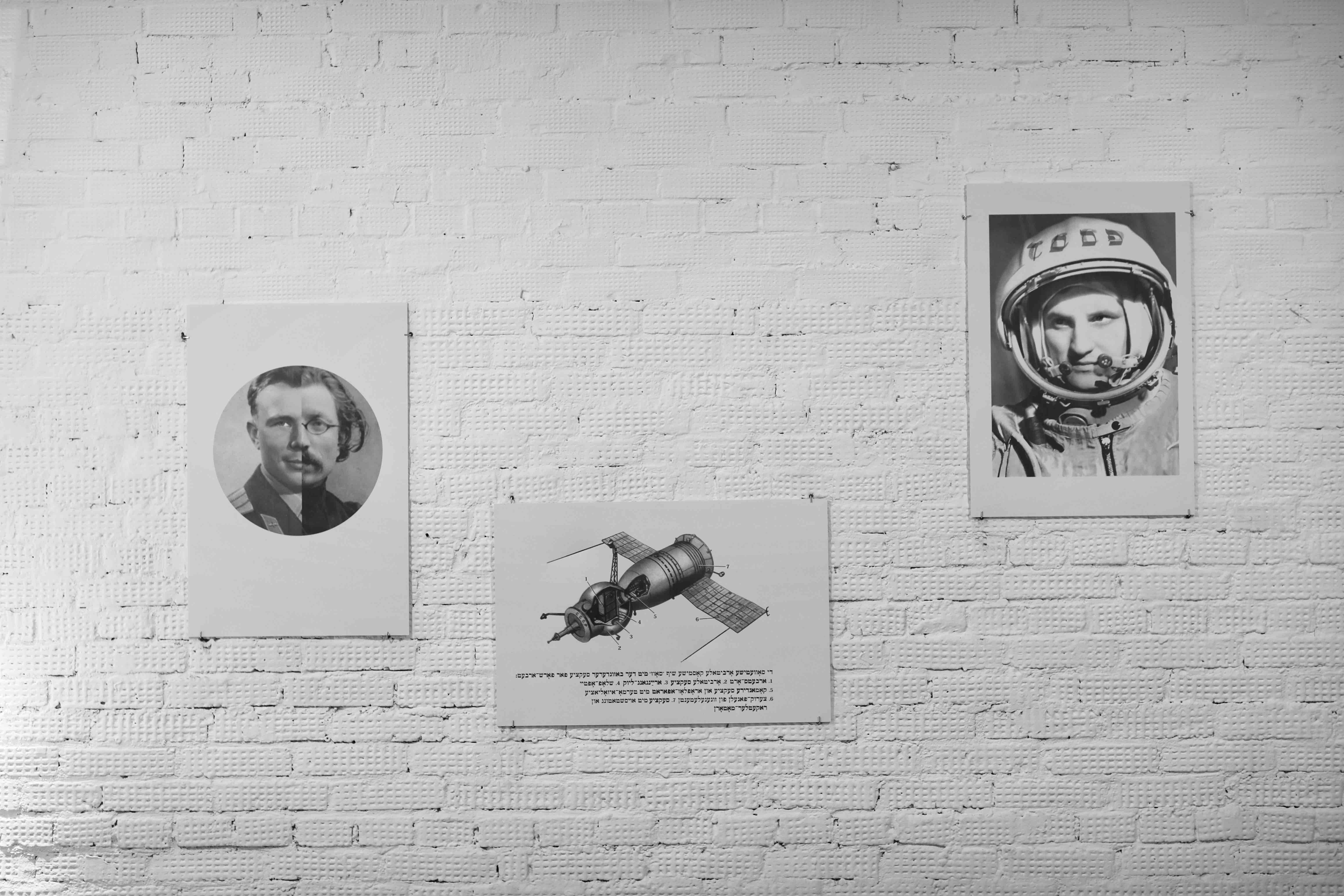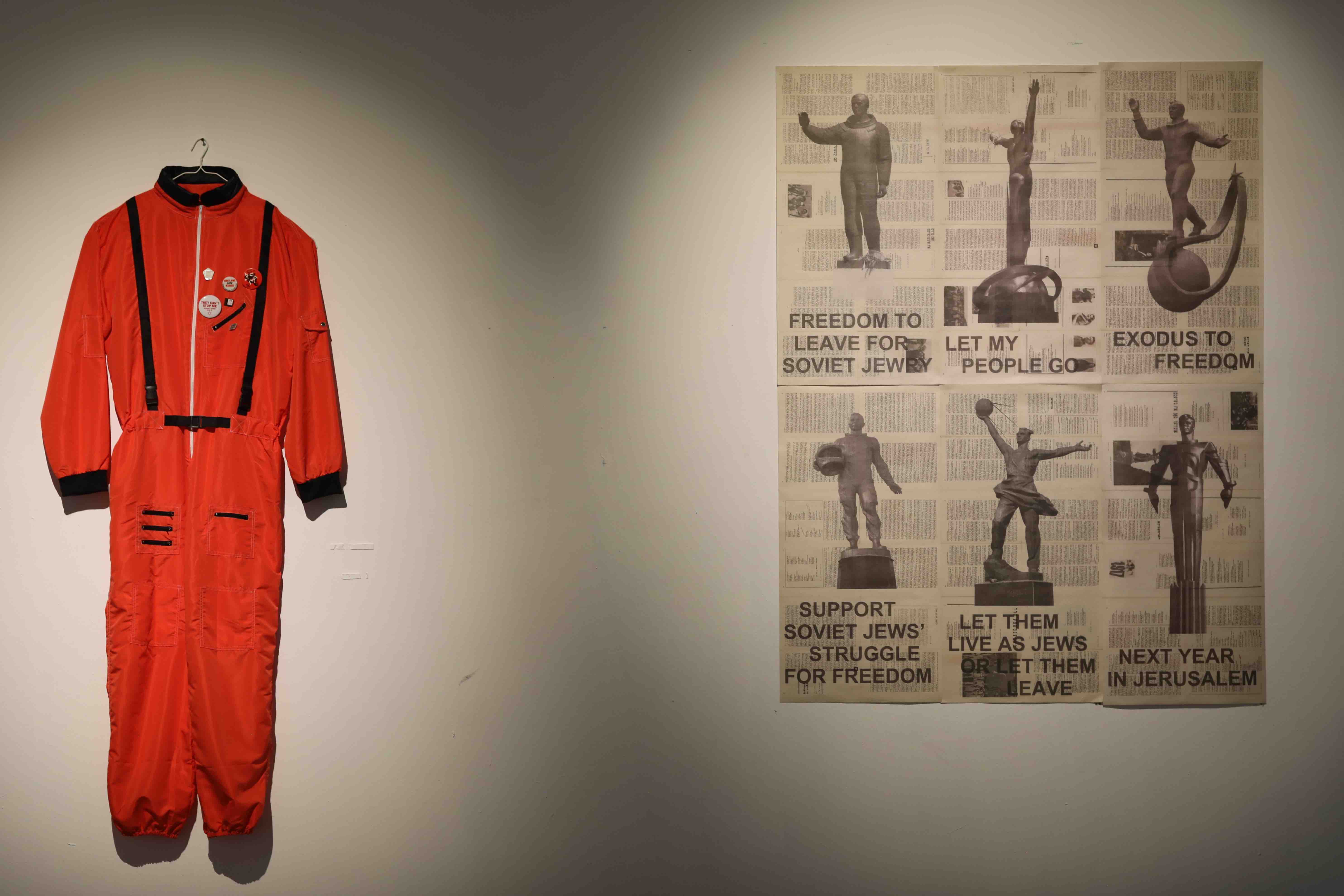Project name
Yiddish Contemporary Art manifesto
Year
2020
Artist
Yevgeniy Fiks
Since roughly 1970s, a new and largely post-vernacular Yiddish culture (Jeffrey Shandler) has started to develop in many, often unexpected, locals around the world. This phenomenon was in parallel to and as a continuation of the surviving secular Yiddish culture that descended from pre-War culturati circles of Vilno, Warsaw, Moscow, New York and elsewhere.
This new Yiddish culture was created by the post-World War II generation of Jewish and non-Jewish artists and academics who often (re)discovered and (re)learned the Yiddish language and employed it for cultural production--mostly music, theater, and literature--as the medium and/or the message. It came into maturity in the era of identity politicsin the 1990s and 2000s. The avant-garde of that new Yiddish culture is post-modern, hybrid, progressive, humanist, and intersectional. This new Yiddish culture welcomed contemporary subjects and forms formerly considered as taboo (e.g. gender and sexuality) while maintaining the long-standing commitment of the historical secular Yiddish culture to equality and social justice. This intersectionality opened up spaces for queer yiddishkeit, Afro-American Yiddish work of Anthony Russell, and “Waiting for Godot” in Yiddish, among many others.
The new Yiddish culture became an evolution from the tribal culture of the tight-knit Eastern European Jewish community and their descendants to an openculture, welcoming creators from different backgrounds and paths in life and working with multitudes of subjects and forms.
Yiddish Contemporary Art?
While art forms that directly employ language—literature, music, and theater—naturally became primary forms of the new Yiddish culture, Yiddish contemporary (visual) art has yet to emerge. But what would constitute Yiddish contemporary (visual) art? Is it contemporary visual art that uses the Yiddish language in some form—text, letterforms, speech—that is, for instance, a video or sound installation or a performance art piece? To what extent and in what forms the Yiddish language must be present in an art piece to be considered Yiddish contemporary art? Perhaps “Yiddish contemporary art” must be defined in more open-ended terms?
I propose we consider “Yiddish contemporary (visual) art” as any contemporary art piece—contemporary painting, works on paper, installation, photography, video, sound, performance art, new media, social practice, etc.—that are consciously produced by the artist as a project of the new Yiddish culture. This art can either directly employ the Yiddish language, form, subjects, themes of Yiddish/Eastern European Jewish culture or be situated in less straightforward relation to them. Works of Yiddish contemporary art have an intentional and knowable connection to the language(s) and culture(s) of Eastern European Jewish communities, in dialogue to language(s) and culture(s) of their neighbors and the world at large.
Between the Tribal and the Intersectional
The question of Yiddish contemporary art brings up such issues as hybridity, assimilation, authenticity, essentialism, and cultural appropriation.
Yiddish contemporary art reflects the general openness of the new Yiddish culture, which welcomes Jewish and non-Jewish cultural producers and any subject and form that conceptually, visually, or otherwise establishes a relationship to the Yiddish language and culture.
Yiddish contemporary art is socially progressive, trans-territorial, and both frumand secular. Yiddish contemporary art is both tribal and intersectional, traditional and synthesized.
In the world of Yiddish contemporary art, the Eastern European Jewish identity co-exists with non-ethnically specific humanist values.
Yiddish contemporary art privileges neither the authenticity of native speakers nor the imagination of post-vernacular Yiddishists. A native Yiddish speaker and a post-vernacular Yiddishist are both critical actors of 21st century Yiddish creativity. No one can claim the authority of Yiddish contemporary art. It is unlocked and open to further development and expansion.
Yiddish contemporary art is produced by choice by its creators.
Yiddish contemporary art embraces diversity, contributes to the cross-cultural exchanges around the world, and maintains 20th-century universalist aspirations.
Yiddish contemporary art “steals” the porous and ever-shifting “borders” of the historical Ashkenazi civilization in Eastern Europe.
Yiddish contemporary art both embraces and rejects nostalgia for the Yiddish culture of the past and is both cautious and excited about the future.
Yiddish contemporary art posits the human being at the center of art.
Yiddish Contemporaneity
The forms of Yiddish contemporary art are the forms representing the life of Yiddish culture today. They are of various degree of religiosity, assimilation, connection to “the old home”, and political commitment.
Yiddish contemporary art is not about reviving or resuscitating the culture of the past but about continuing and reimagining Yiddish culture in earlier unforeseen forms under new conditions.
At the same time, Yiddish contemporary art is against forcing Yiddish culture into contemporaneity through violent modernization of “shock therapy.” Yiddish culture is a living culture that doesn’t need to be “upgraded” to the imperialist “standards” of contemporary hegemonic cultures. There is no need to translate forms and themes of hegemonic cultures into Yiddish or finding Yiddish equivalents to it.
The Yiddish contemporary art must be allowed to develop under its internal logic, for the unique multidimensional Yiddish contemporaneity.
We do not need “Yiddish abstract expressionism” or “Yiddish relational esthetics”. What we need are, simply, forms of Yiddish contemporary art.
Forms of Yiddish contemporary art are both already here and have yet to be developed. While rejecting the dictates of cultural imperialism, Yiddish contemporary art is at the same time open to everything progressive locally and globally.
Yiddish contemporary art strives for the equilibrium between particularism and universalism.
Yiddish contemporary art is migrant, diasporic, and global.
Yiddish contemporary art is representational, modernist, monumental, ephemeral, participatory, performative, and so on.
The colors of Yiddish contemporary art are exquisite, its forms are refined, and its lines are trembling.
Yevgeniy Fiks
photos: Yevgeniy Fiks “Yiddish Cosmos” exhibition from 2019, curator: Maria Veits (photos by Oded Comay)






